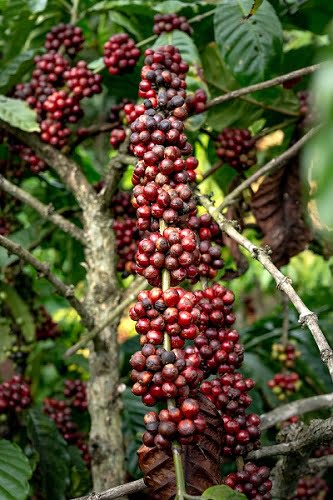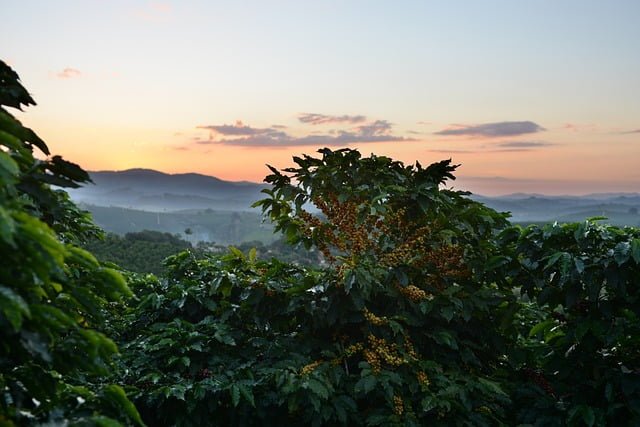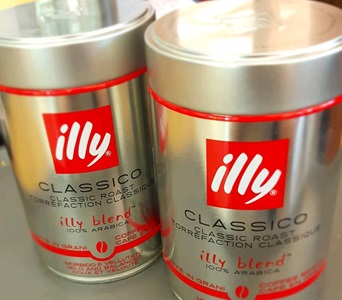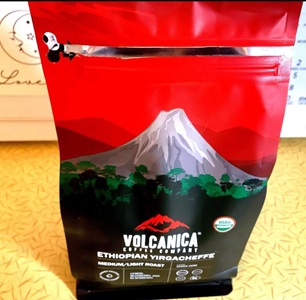Coffea Arabica is the most widely cultivated coffee species, making up about 60% of global production. It originates from Ethiopia and is known for its smooth, complex taste and floral aroma. Arabica has a sweeter flavor and less bitterness compared to other coffee species.
Arabica coffee has risen to rockstar status because of its sweet, fruity taste and heavenly aroma. This finicky bean simply makes your daily cup of joe better.
Unlike its rugged cousin robusta, Arabica delivers a smooth and well-balanced caffeine kick.
This premium coffee bean, cultivated in the world’s most renowned coffee regions, delivers notes of chocolate, caramel, and berries without a trace of bitterness.

Key Takeaways
- Arabica coffee is known for its sweeter and complex flavor profiles
- Arabica beans are elongated in shape, while the cherries are smaller and oval
- Arabica thrives at high altitudes of 3000-6000 feet with significant rainfall and volcanic soil
- Ethiopia is the birthplace of Arabica and home to many heirloom varieties
- Major Arabica-producing regions are Latin and Central America, East Africa, and Asia
- Popular Arabica varieties include Typica, Bourbon, Geisha, Pacamara, Mundo Novo, Ethiopian Heirlooms, Caturra, and Catuai
What are the characteristics of Arabica coffee Beans?
Arabica coffee beans are usually long in shape, with a curved line on one side called the “bean’s cleft”.
The cherries containing Arabica beans are smaller and more oval in shape than those of the Robusta variety. Arabica coffee cherries mature more slowly and are typically deep red or purple when ripe.
Expertly roasted Arabica beans produce a drink with intricate flavors like fruit, chocolate, and wine.
Arabica coffee is popular among coffee enthusiasts for their wide range of flavors and lack of bitterness.
Due to high demand, Arabica beans tend to be more expensive than other types.

Why is it called Arabica coffee
Arabica coffee gets its name from the Arabian Peninsula, where people think it was first grown and traded.
It was initially cultivated and traded in the Arab and African world, specifically in Ethiopia and Yemen. Its name reflects its historical association with Arab coffee culture and early adoption in Arab countries.
Where is Arabica Coffee grown?
Arabica coffee is grown in tropical highland climates, typically between 3,000-6,000 feet above sea level. It requires significant rainfall, rich volcanic soil, and temperatures between 64-70°F to grow best.
Arabica coffee is cultivated in various regions around the world, primarily in countries within the “Bean Belt.”

Some of the major Arabica coffee-producing regions include:
1. Latin America
Leading Arabica producers are Brazil, Colombia, Honduras, and Guatemala. The mountainous terrains and mineral-rich soils provide ideal growing conditions.
This region is the largest coffee-producing region in the World where only Brazil produces 40% of the World’s Coffee supply.
2. East Africa
Ethiopia is the birthplace of Arabica coffee, and it remains one of the most important coffee-producing countries in Africa.
Other African countries, such as Kenya, Tanzania, Rwanda, and Burundi, also produce high-quality Arabica coffee.
3. Asia
India and Indonesia are the main Arabica coffee-producing countries in Asia.
Indonesia is renowned for Arabica beans from Sumatra with an earthy, spice-toned profile. India’s Arabica coffee is grown in the Baba Budan Mountains and includes a unique monsooned malabar variety.
4. Central America
Countries in Central and South America, including Peru, Ecuador, Honduras, and Nicaragua, have been increasing their Arabica coffee production in recent years.
This region has an optimal climate of high altitudes, volcanic soil, and mild temperatures.
Check out an interesting article on What Country has the best coffee
The cultivation of Arabica coffee
Arabica coffee plants are a bit finicky about their conditions; they prefer well-draining, fertile soil with a slight touch of acidity.
Farmers first grow Arabica from seeds in nurseries until the plants are 1-2 years old. Then they transplant the young trees outdoors. It takes about 3-4 years for the first full harvest to be ready.
Farmers in some regions take the coffee experience up a notch by growing Arabica under the canopy of shade trees.
These shade-grown beans often have a more nuanced flavor profile, because of regulated sunlight and cooler temperatures. Plus, it’s a win for the environment, as these coffee farms promote sustainable practices.
Arabica plant is actually a little shrub that can grow to about 9-12 feet tall if left unchecked! But growers keep them pruned short so picking all those yummy coffee cherries is easier.
What does Arabica Coffee taste like?
What really makes Arabica special is its natural sweetness and smoothness. The taste is much more balanced and complex compared to other coffee species.
When expertly roasted, Arabica beans produce a brew with hints of chocolate, caramel, berries, and other fruity notes. There is bright acidity but it’s smooth rather than harsh or bitter.
I love brewing Arabica coffee in my pour-over setup because it’s like crafting a personalized coffee masterpiece. And I always prefer a medium roast when brewing Arabica coffee since it maintains the bean’s inherent floral, fruity notes that can get muted in darker roasts.
The manual pour-over process allows me to carefully control the temperature, brew time, and extraction to really highlight the subtle flavor notes of Arabica beans.
The taste and flavors of Arabica also depend on the growing region.
- African Region: Arabica from Africa has a bright, lively acidity with floral and citrusy notes. Ethiopian Arabica is celebrated for its wine-like flavors, while Kenyan coffee offers a bold, fruity profile.
- Latin American Region: These Arabics tend to have a milder acidity and a well-balanced taste. Colombian Arabica is famous for its nutty and caramel sweetness, while Brazilian Arabica offers a smoother, chocolatey profile.
- Asian Region: Arabicas from Asian regions like Sumatra can be earthy and full-bodied with herbal hints, while Indian Arabica often features spicy and exotic flavors.
As an Amazon Associate, I earn commission from qualifying purchases.
What are the Best Arabica Coffee Beans?
Here are my favorite Arabica Coffee brands
1. Illy Coffee
Illy is my favorite Arabica coffee brand. It offers expertly blended Arabica from different regions and enticing single-origin options from Colombia, Ethiopia, Brazil, Guatemala, and India – all 100% Arabica.
I particularly enjoy the balanced Colombian single-origin coffee, with fruity and citrus notes.
Illy starts with the top 1% of sustainably grown Arabica worldwide, available in three roasting intensities. Their unique pressurized packaging keeps the freshness and flavors of coffee beans.

2. Volcanica Coffee
Volcanica is my top choice for extraordinary Arabica coffee, carrying over 130 varieties sourced from premier volcanic regions worldwide.
I’m especially fond of their floral, complex Tanzania Peaberry and bright Ethiopian Yirgacheffe single origins.
Volcancia sources only the finest Arabica coffee cherries and is dedicated to bringing the diverse flavors of each region alive in every sip.

How much Caffeine in Arabica Coffee?
On average, Arabica contains around 8-12 mg/g of caffeine. It has lower caffeine content compared to Robusta Beans. A typical cup of Arabica coffee provides around 75-150 mg of caffeine depending on factors like brew method and serving size.
The lower caffeine in Arabica provides a smoother, less bitter taste since caffeine also slightly contributes to coffee’s inherent bitterness.
If you are sensitive to caffeine you will find Arabica’s moderate caffeine amounts more palatable.
What are the Different varieties of Arabica coffee?
The Arabica coffee family is vast and diverse, with 50+ different varieties. Some are grown in specific regions, while others thrive in many coffee-growing regions around the world.

These are the main varieties of Arabica Coffee
1. Typica
Typica is one of the most widely grown varieties of Arabica coffee. Originally from Ethiopia, it was spread to Indonesia and Central/South America by Dutch traders in the 1700s.
Typica Coffee plants produce conical-shaped trees that grow up to 6 meters tall. They have bronze-tipped leaves and long, cylindrical coffee cherries.
The beans produce a coffee with a sweet, soft, well-balanced flavor profile and medium acidity. It has tasting notes of chocolate, caramel, honey and nuts.
The mild flavor and good balance of acidity and body make Typica a popular choice for blending with other coffee varietals.
While grown in many regions, Jamaican Blue Mountain and Hawaii’s Kona district are particularly prized for Typica coffee.
2. Bourbon
Bourbon is a highly valued Arabica coffee variety that was first grown on the Indian Ocean island of Bourbon, now known as La Reunion.
It is primarily found in coffee-producing regions in Central and South America and some parts of Africa.
The Bourbon coffee plant is a compact, stocky shrub that produces short nodes and small, rounded leaves. The plants yield dense clusters of coffee cherries that are smaller than Typica cherries.
Bourbon coffee is known for its sweet, balanced flavor profile with rich notes of chocolate and caramel. It often has a fruity acidity featuring berry and citrus tones. The body tends to be medium to full with a syrupy mouthfeel and intense aroma.
According to the World Coffee Research Organization:
“Bourbon is one of the most culturally and genetically important C. arabica varieties in the world, known for excellent quality in the cup at the highest altitudes.
3. Geisha
Geisha coffee is a highly prized Arabica coffee variety that originated in Ethiopia but gained international praise in Panama.
Geisha coffee is known for its unique flavor profile, which often includes notes of jasmine, peach, and bergamot.
Geisha thrives in the high altitudes and rich volcanic soil of Panama’s Boquete region. The tall, vigorous trees produce large leaves and beans with tea-like flavors.
The hype around Geisha comes from record-breaking auctions – in 2019, a 100 lb bag sold for $1,029 per pound in Panama.
4. Pacamara
Pacamara is mostly grown in Central America, especially El Salvador and Guatemala, at altitudes above 4,500 feet.
The Pacamara coffee is known for its large beans that result in a distinct sweetness due to a higher concentration of sugars.
It is a cross between the Pacas and Maragogipe varietals.
The slow maturation process also leads to complex flavors and wine-like acidity. These unique qualities make Pacamara one of the most prized beans.
5. Mundo Novo
Mundo Novo is a notable Arabica coffee variety, particularly known for its disease resistance and adaptability to various growing conditions.
This coffee variety is found primarily in Brazil, one of the world’s largest coffee-producing countries.
Mundo Novo coffee often offers a balanced and smooth cup with mild to moderate acidity. The flavor profile is characterized by nutty and chocolatey notes, with a clean and pleasant finish.
6. Ethiopia Heirloom
As the birthplace of Arabica coffee, Ethiopia is home to a diverse range of heirloom coffee varieties that have been cultivated for centuries.
These indigenous varieties include Harar, Sidamo, and Yirgacheffe. They grow in the highlands of southern and eastern Ethiopia in ideal coffee-producing conditions.
Ethiopian Heirloom coffees often showcase bright acidity, floral and fruity notes, and a distinct sweetness that reflects the terroir of their origin.
7. Caturra
Caturra is a mutation of the Bourbon Arabica variety that originated in Brazil in the late 1930s.
Caturra variety thrives in the rich volcanic soil and cool highland climates of South and Central America, especially Brazil and Colombia.
It is a dwarf, compact shrub that produces high yields and grows well at high altitudes. Caturra produces a coffee with a rich, velvety taste and a well-balanced body.
8. Catuai
Catuai is a hybrid of Caturra and Mundo Novo, known for its high yield and hardiness.
Catuai Variety is a preferred choice for coffee cultivation in various regions worldwide, especially on steep terrain. Catuai trees are compact, vigorous, and highly productive.
9. SL28 & SL34
SL28 and SL34 refer to two celebrated Kenyan coffee varieties that originated from the Scott Agricultural Laboratories in the early 1900s.
They are grown exclusively in the Central Highlands of Kenya and are prized for their exceptional cup quality and higher yields.
The beans are medium-sized and yield a lively, acidic drink with sublime fruity tones, full body, and complex flavor.
Arabica vs Robusta
The two primary market varieties of coffee; Robusta and Arabica, have several differences:
Coffee Plant: Arabica beans are more delicate and elongated, while Robusta beans are more robust and rounded. Arabica plants prefer high altitudes and cool climates, while Robusta beans thrive at lower altitudes and can withstand more variable climates.
Production: Arabica is a less productive and more labor-intensive crop that is more susceptible to pests and diseases, while Robusta is a more productive and easier-to-cultivate crop that is more resistant to diseases.
Price: Arabica is more expensive, and can be 2-3 times the price of Robusta which is cheaper and often used in coffee blends to lower the cost.
Taste: Arabica offers a smoother, nuanced flavor with fruity and floral notes, while Robusta has a stronger, bitter taste with earthy undertones.
Caffeine: Arabica has 1.1-1.5% caffeine content by weight while Robusta has 2.2-2.7% caffeine, nearly double Arabica.
With that said, Robusta coffee isn’t to be dismissed as inferior. It plays a vital role in the coffee world, particularly in the preparation of instant coffee.
In addition, Robusta beans are frequently used in espresso blends as the dense beans help produce a thicker crema and provide a powerful caffeine kick.
Read a guide on Robusta Coffee Variety
Final Thoughts
And that’s a wrap on the wonderful world of Arabica coffee! I don’t know about you, but learning about this queen of beans has given me an even greater appreciation for my daily cup of Joe.
With its delightful flavors and complexity, Arabica coffee truly delivers the best experience for us java junkies.
I’d love to hear your thoughts in the comments – what’s your favorite Arabica varietal?
Check out a guide on Different types and varietals of coffee beans
FAQs
Why is Arabica Coffee expensive?
Arabica coffee is more expensive than other types because It’s picky about where it grows, needs just the right conditions, and is more susceptible to diseases and pests. Plus, it takes longer to ripen on the coffee tree, making it a bit high-maintenance.
What is 100% Arabica coffee?
When you see a bag of coffee labeled “100% Arabica” it means those beans are completely made up of the Arabica coffee species. None of the cheaper, more bitter robusta beans are blended in there!
Arabica itself has tons of varieties though – like the smooth, balanced Typica or fruity, acidic Bourbon. A 100% Arabica coffee could be a blend of any of these varieties.
Is Nescafe 100% Arabica?
Nescafe is primarily known for its instant coffee products which typically contain a blend of cheaper coffee beans rather than 100% Arabica.
However, Nescafe does have some premium offerings like Nescafe Espresso Gold Blend which is 100% Arabica.
Does Arabica coffee have Calories?
Yes, Arabica coffee contains calories (Negligible amount) like any other coffee variety. A typical 8oz cup of black Arabica coffee brewed from ground beans contains around 2-5 calories.
Does Starbucks Use Arabica Coffee?
Yes, Starbucks uses 100% Arabica coffee beans in all its blends. They do not use any other varieties.
Starbucks says that they only source and roast fine Arabica coffees from regions like Latin America, Africa, and Asia Pacific.




Love Arabica! It’s my go-to for smooth coffee. Cool info about the different varieties. Anyone tried Typica or Bourbon?
Typica and Bourbon are both great varieties with distinct flavors—definitely worth a try if you enjoy exploring different tastes in coffee.
Thanks for breaking down Arabica coffee in such a simple way, made me feel smarter lol. Finally get why everyone makes such a big deal about it at coffee shops!
What of the caffeine in your coffee?